Two-Phase Flow Coordination Characteristics of H62 Brass Alloy Prepared by Up-Drawing Continuous Casting
Abstract
:1. Introduction
2. Materials and Methods
3. Results and Discussion
3.1. Determination of Two-Phase Structures
3.2. Effects of Deformation Temperature
3.3. Effects of Deformation Rate
3.4. Influence of the Strain
3.5. Numerical Simulation of H-Shaped Wire by Continuous Extrusion
3.6. H-Shaped Wire Continuous Extrusion
4. Conclusions
- Under the deformation rate of 0.1 s−1 and deformation amount of 25%, when the deformation temperature is lower than the transformation temperature of 456 °C, the flow of β’ phase is enhanced relatively with increasing temperature, but β’ phase still cannot inhibit the decrease in the whole area, and its flow is still lower than α phase. When the temperature increases to 500 °C, β’ phase transforms into β phase and the phenomenon that the β phase is covered with α phase is absent. The flow of the β phase increases significantly and can be close to that of α phase. In order to ensure the stable forming of two-phase brass alloy, it is necessary to ensure that the deformation temperature is above 500 °C.
- With the deformation rate reduction, the phenomenon that α phase covers β’ phase is not dominant at the deformation temperature of 400 °C and 500 °C. However, when the deformation rate increases to 0.1 s−1, the β or β’ phase bulges, which indicates that the lower deformation rate is more favorable for the flow of β or β’ phase than α phase. Therefore, it is important to ensure a low deformation rate during deformation for stable forming.
- When the temperature is lower than β phase transition temperature of 456 °C, the area of β’ phase decreases further, and the flow of α phase is ascended with the increase in deformation amount under the deformation rate of 0.01 s−1, which induces α phase to cover β’ phase. When the temperature increases to 500 °C, which is higher than β phase transition temperature (456 °C), the β phase is more sensitive to the variation of deformation than the α phase, which induces the β phase to bulge. It is found that the grains of α and β phase are more easily broken and refined at the temperature above 500 °C than below 500 °C.
- Based on upsetting results, the optimum numerical simulation results were obtained. Process parameters provided by numerical simulation were applied in the experiment. The continuous extrusion experiment of the H-shaped wire of H62 brass was carried out. The preheating temperature was 500 °C, and the extrusion wheel speed was 4 rpm. The products with a uniform distribution of two phases, a grain size of 2~5μm, and a high consistency of center and corner structure were obtained.
Author Contributions
Funding
Institutional Review Board Statement
Informed Consent Statement
Data Availability Statement
Conflicts of Interest
References
- Mikhaylovskaya, A.; Yakovtseva, O.; Tabachkova, N.; Langdon, T. Formation of ultrafine grains and twins in the β-phase during superplastic deformation of two-phase brasses. Scr. Mater. 2022, 218, 114804. [Google Scholar] [CrossRef]
- Willis, M.; Jones, J. Creep mechanisms in a dual-phase brass. Scr. Mater. 2001, 44, 31–36. [Google Scholar] [CrossRef]
- Sun, Y.; Wang, X.; Ma, Y.; Liu, H. Investigation on improved micro-formability and forming mechanism under high strain rate of H62 brass in pulsed current-assisted laser impact micro-forming. Mater. Sci. Eng. A 2022, 830, 142301. [Google Scholar] [CrossRef]
- Fang, X.; Li, Z.; Wang, Y.; Ruiz, M.; Ma, X.; Wang, H.; Zhu, Y.; Schoell, R.; Zheng, C.; Kaoumi, D.; et al. Achieving high hetero-deformation induced (HDI) strengthening and hardening in brass by dual heterostructures. J. Mater. Sci. Technol. 2022, 98, 244–247. [Google Scholar] [CrossRef]
- Gaurav, P.; Chakraborty, S.B.; Vejendla, P. Deformation and annealing of brass. Mater. Today Proc. 2022, 64, 1380–1383. [Google Scholar] [CrossRef]
- Singh, V.D.; Hussain, M.M. A comparison of formability on brass alloy at room and 773 K temperature. Mater. Today Proc. 2022, 62, 4397–4401. [Google Scholar] [CrossRef]
- Neishi, K.; Horita, Z.; Langdon, T. Achieving superplasticity in a Cu–40% Zn alloy through severe plastic deformation. Scr. Mater. 2001, 45, 965–970. [Google Scholar] [CrossRef]
- Neishi, K.; Uchida, T.; Yamauchi, A.; Nakamura, K.; Horita, Z.; Langdon, T. Low-temperature superplasticity in a Cu–Zn–Sn alloy processed by severe plastic deformation. Mater. Sci. Eng. A 2001, 307, 23–28. [Google Scholar] [CrossRef]
- Lee, S.; Chun, Y.; Han, J.; Hwang, S. Effect of thermomechanical processing on grain boundary characteristics in two-phase brass. Mater. Sci. Eng. A 2003, 363, 307–315. [Google Scholar] [CrossRef]
- Kim, H.; Kim, W.; Song, K. Effect of post-heat-treatment in ECAP processed Cu–40% Zn brass. J. Alloys Compd. 2012, 536, S200–S203. [Google Scholar] [CrossRef]
- Sarma, V.S.; Sivaprasad, K.; Sturm, D.; Heilmaier, M. Microstructure and mechanical properties of ultra fine grained Cu–Zn and Cu–Al alloys produced by cryorolling and annealing. Mater. Sci. Eng. A 2008, 489, 253–258. [Google Scholar] [CrossRef]
- Cai, J.; Shekhar, S.; Wang, J.; Shankar, M.R. Nanotwinned microstructures from low stacking fault energy brass by high-rate severe plastic deformation. Scr. Mater. 2009, 60, 599–602. [Google Scholar] [CrossRef]
- Xiao, G.; Tao, N.; Lu, K. Microstructures and mechanical properties of a Cu–Zn alloy subjected to cryogenic dynamic plastic deformation. Mater. Sci. Eng. A 2009, 513, 13–21. [Google Scholar] [CrossRef]
- Garg, R.; Ranganathan, S.; Suwas, S. Effect of mode of rolling on development of texture and microstructure in two-phase (α+β) brass. Mater. Sci. Eng. A 2010, 527, 4582–4592. [Google Scholar] [CrossRef]
- Peng, K.; Mou, X.; Zeng, J.; Shaw, L.; Qian, K. Equivalent strain, microstructure and hardness of H62 brass deformed by constrained groove pressing. Comput. Mater. Sci. 2011, 50, 1526–1532. [Google Scholar] [CrossRef]
- Xiao, Y.; Guo, C.; Guo, X. Constitutive modeling of hot deformation behavior of H62 brass. Mater. Sci. Eng. A 2011, 528, 6510–6518. [Google Scholar] [CrossRef]

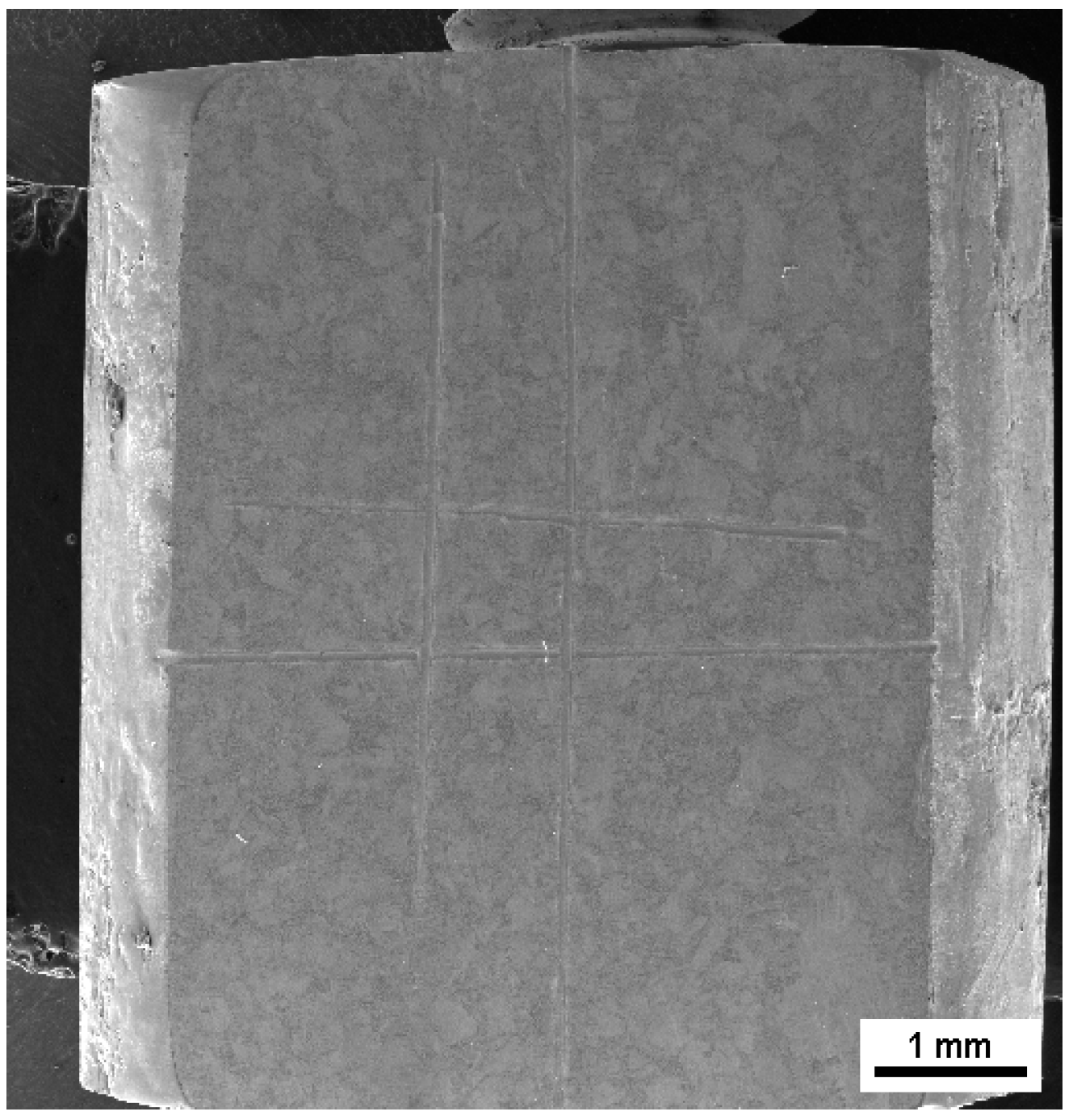



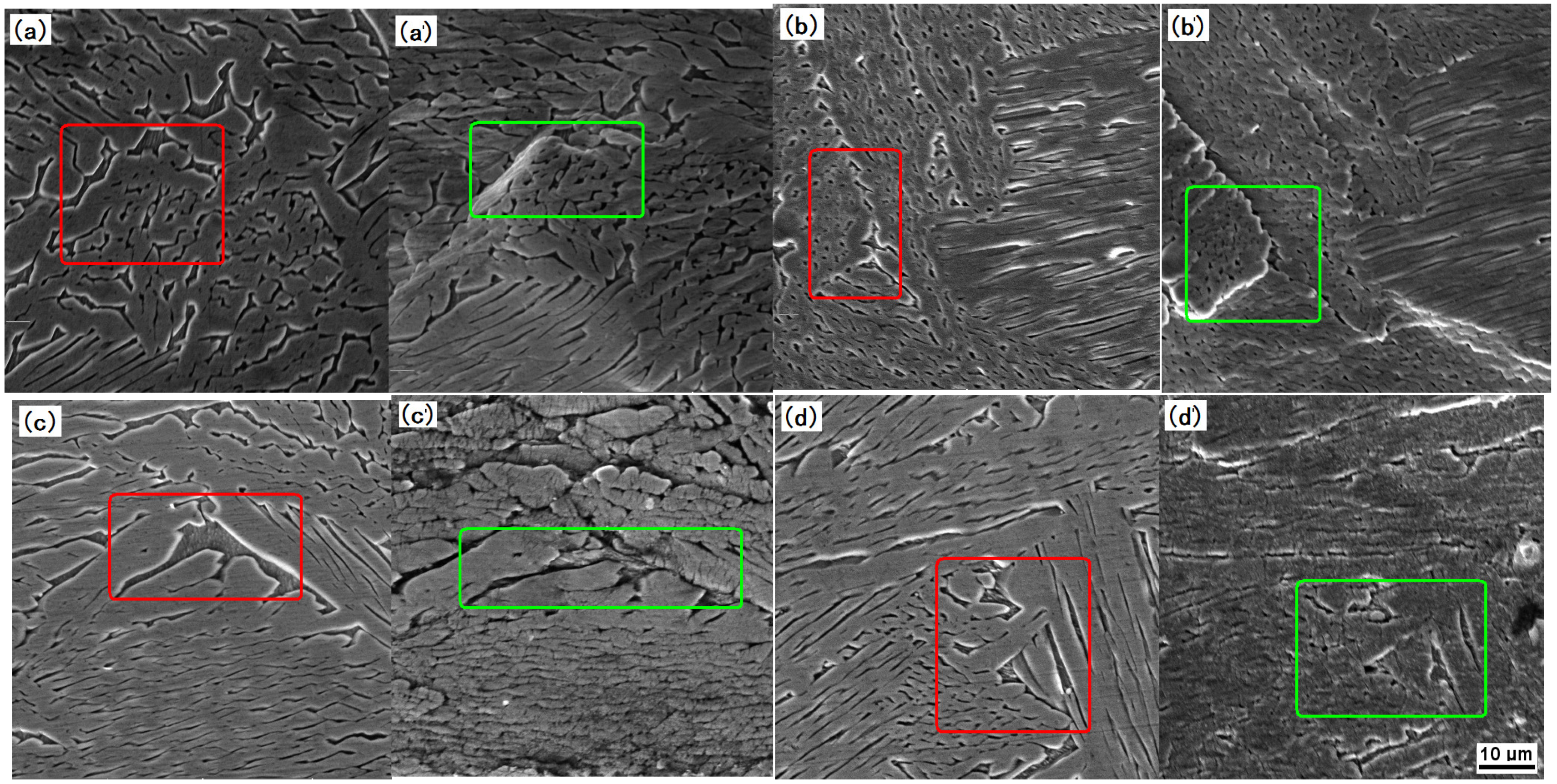
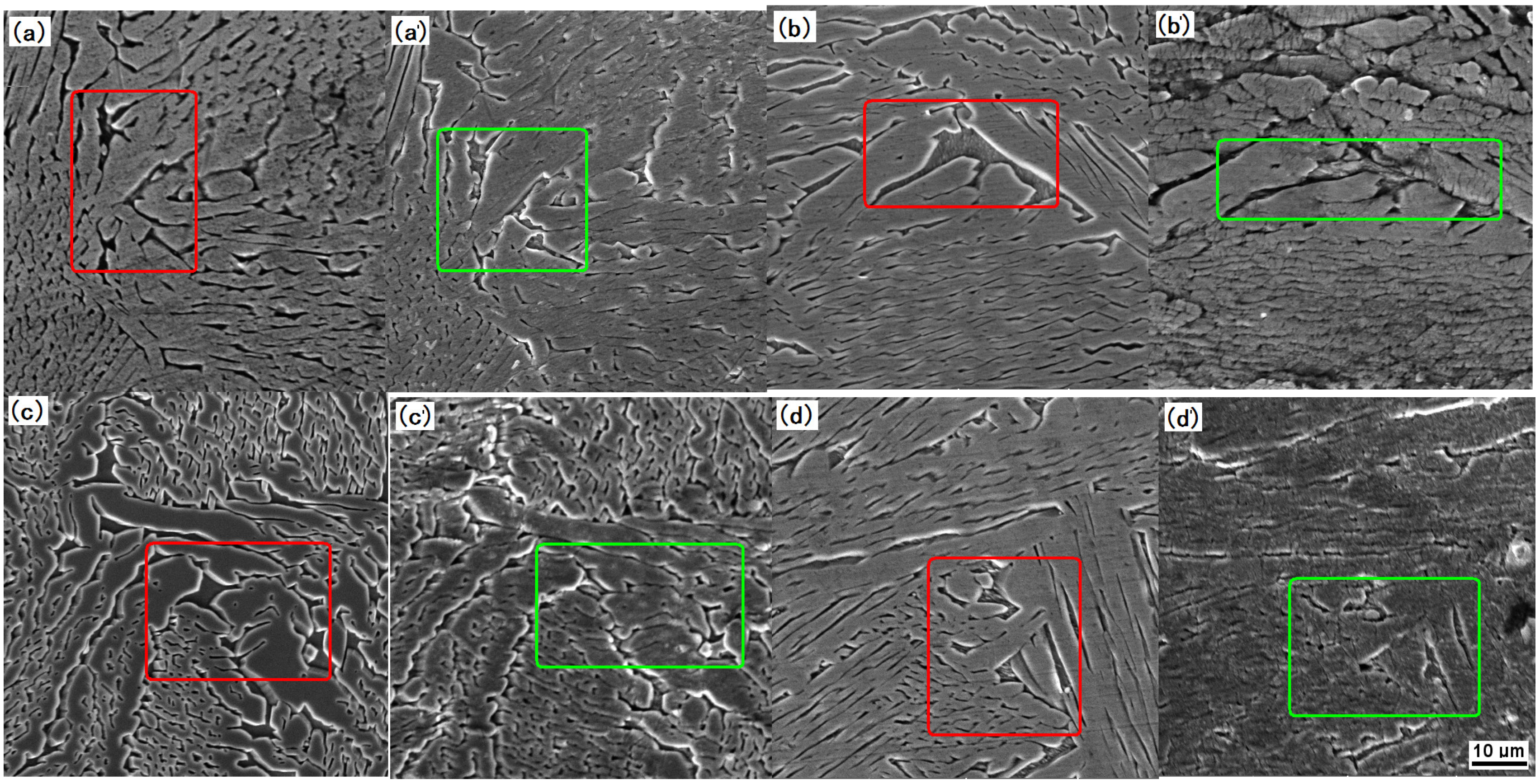

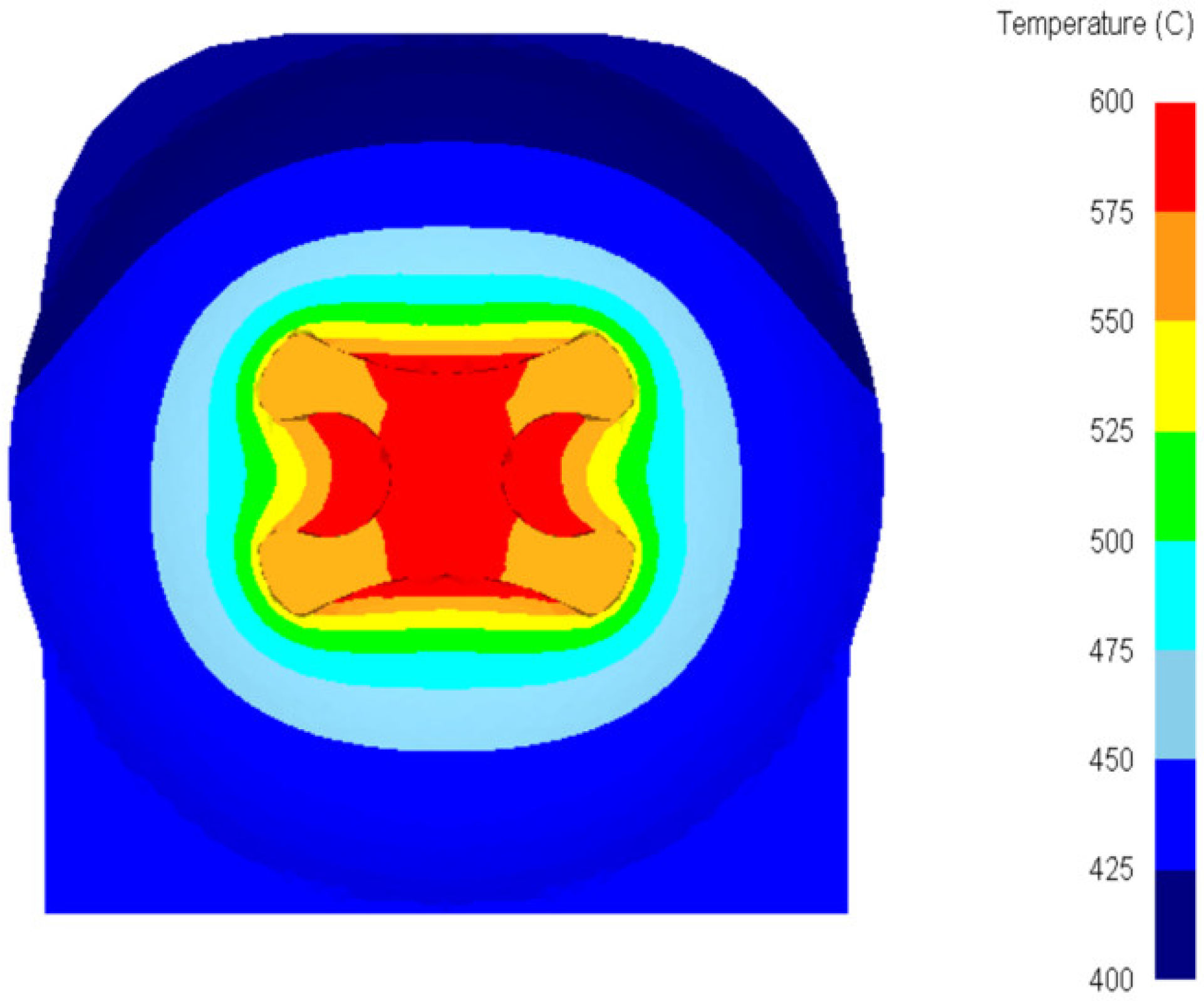

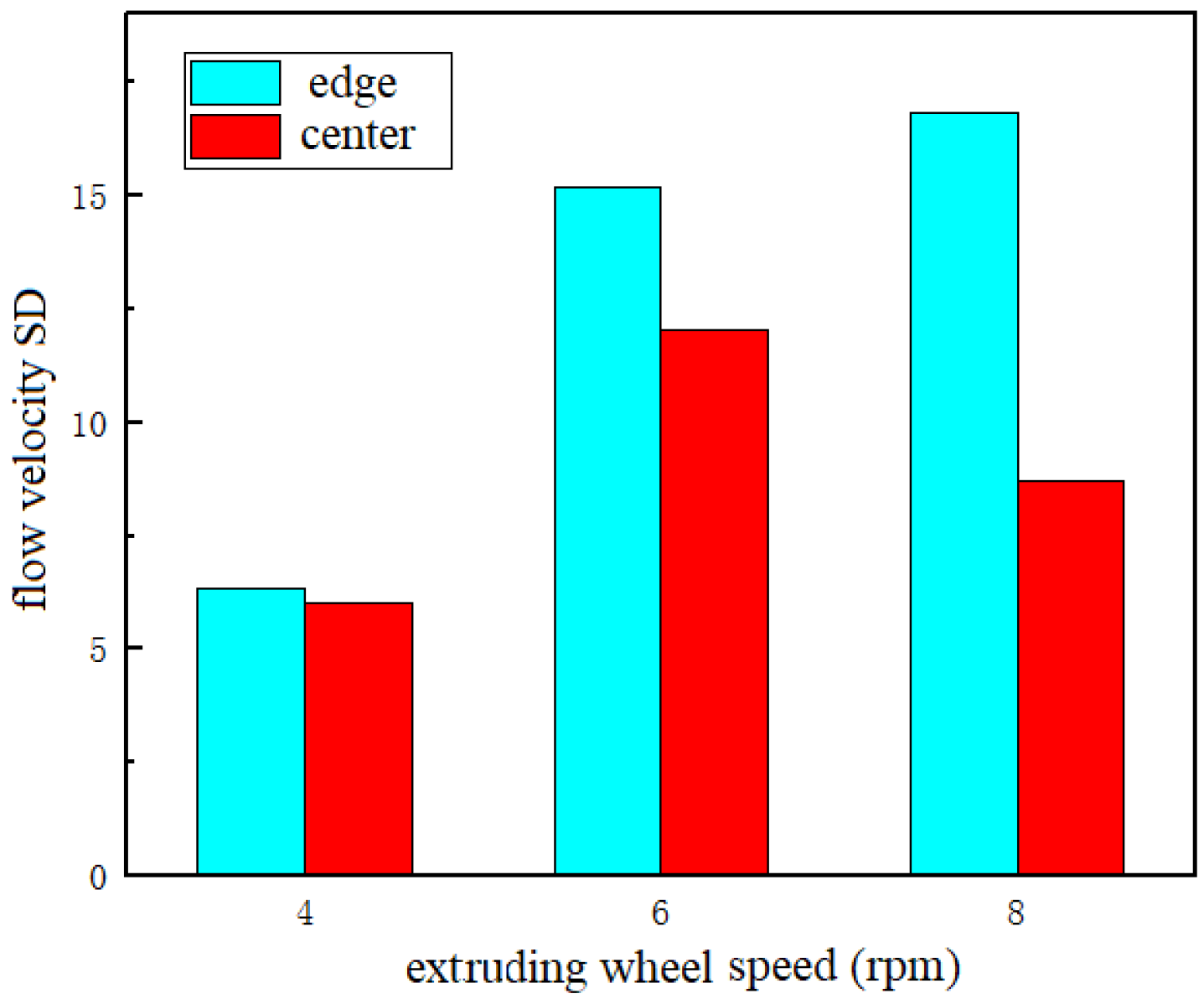

| Sample No. | 1 | 2 | 3 | 4 | 5 | 6 | 7 | 8 | 9 |
|---|---|---|---|---|---|---|---|---|---|
| Deformation temperature/°C | 20 | 300 | 300 | 400 | 400 | 400 | 500 | 500 | 500 |
| Deformation rate/s−1 | 0.1 | 0.1 | 0.01 | 0.1 | 0.01 | 0.01 | 0.1 | 0.01 | 0.01 |
| Deformation amount/% | 25 | 25 | 25 | 25 | 25 | 35 | 25 | 25 | 35 |
| Parameters | Values |
|---|---|
| Extruding wheel diameter/mm | 250 |
| Billet length/mm | 100 |
| Extruding wheel speed/rpm | 4/6/8 |
| Extrusion line speed/mm∙s−1 | 52.3/78.5/104.7 |
| Preheat temperature/°C | 500 |
Disclaimer/Publisher’s Note: The statements, opinions and data contained in all publications are solely those of the individual author(s) and contributor(s) and not of MDPI and/or the editor(s). MDPI and/or the editor(s) disclaim responsibility for any injury to people or property resulting from any ideas, methods, instructions or products referred to in the content. |
© 2023 by the authors. Licensee MDPI, Basel, Switzerland. This article is an open access article distributed under the terms and conditions of the Creative Commons Attribution (CC BY) license (https://creativecommons.org/licenses/by/4.0/).
Share and Cite
Li, B.; Fu, Q.; Yu, R.; Lin, Z.; Wang, J.; Wang, X.; Guan, R.; Li, J. Two-Phase Flow Coordination Characteristics of H62 Brass Alloy Prepared by Up-Drawing Continuous Casting. Metals 2023, 13, 599. https://doi.org/10.3390/met13030599
Li B, Fu Q, Yu R, Lin Z, Wang J, Wang X, Guan R, Li J. Two-Phase Flow Coordination Characteristics of H62 Brass Alloy Prepared by Up-Drawing Continuous Casting. Metals. 2023; 13(3):599. https://doi.org/10.3390/met13030599
Chicago/Turabian StyleLi, Bing, Qianqian Fu, Rongzhou Yu, Zikai Lin, Jun Wang, Xue Wang, Renguo Guan, and Jiehua Li. 2023. "Two-Phase Flow Coordination Characteristics of H62 Brass Alloy Prepared by Up-Drawing Continuous Casting" Metals 13, no. 3: 599. https://doi.org/10.3390/met13030599




